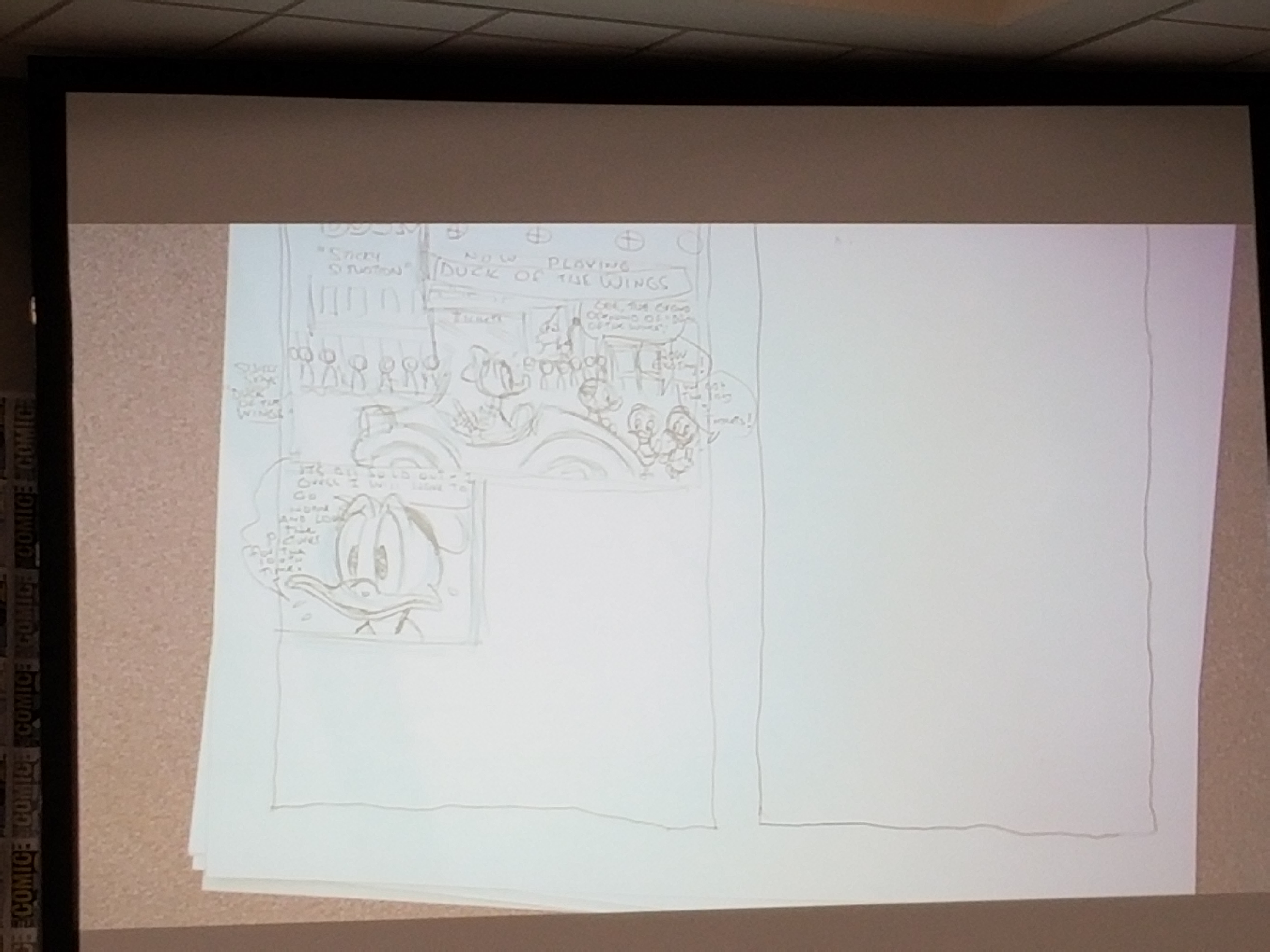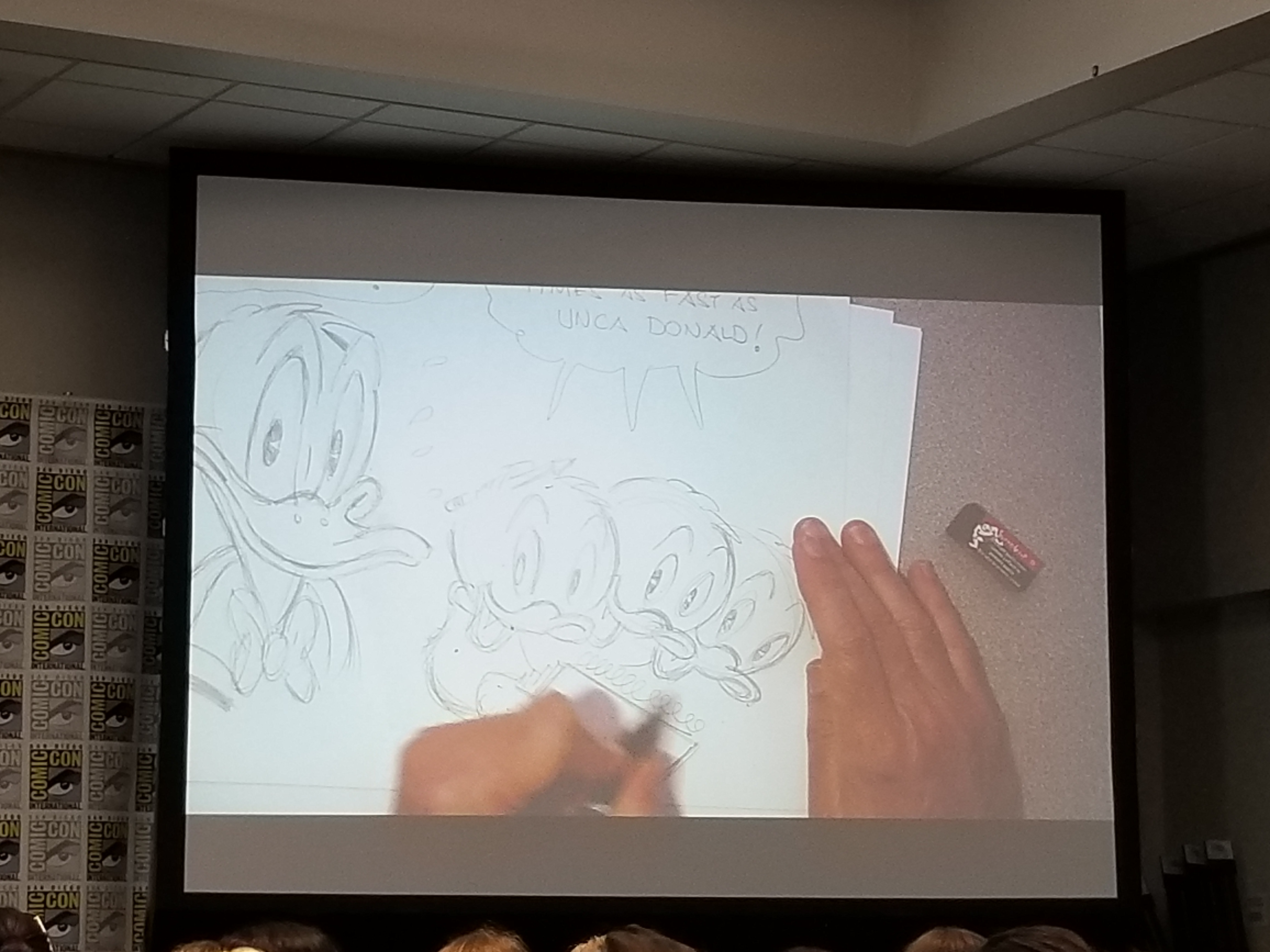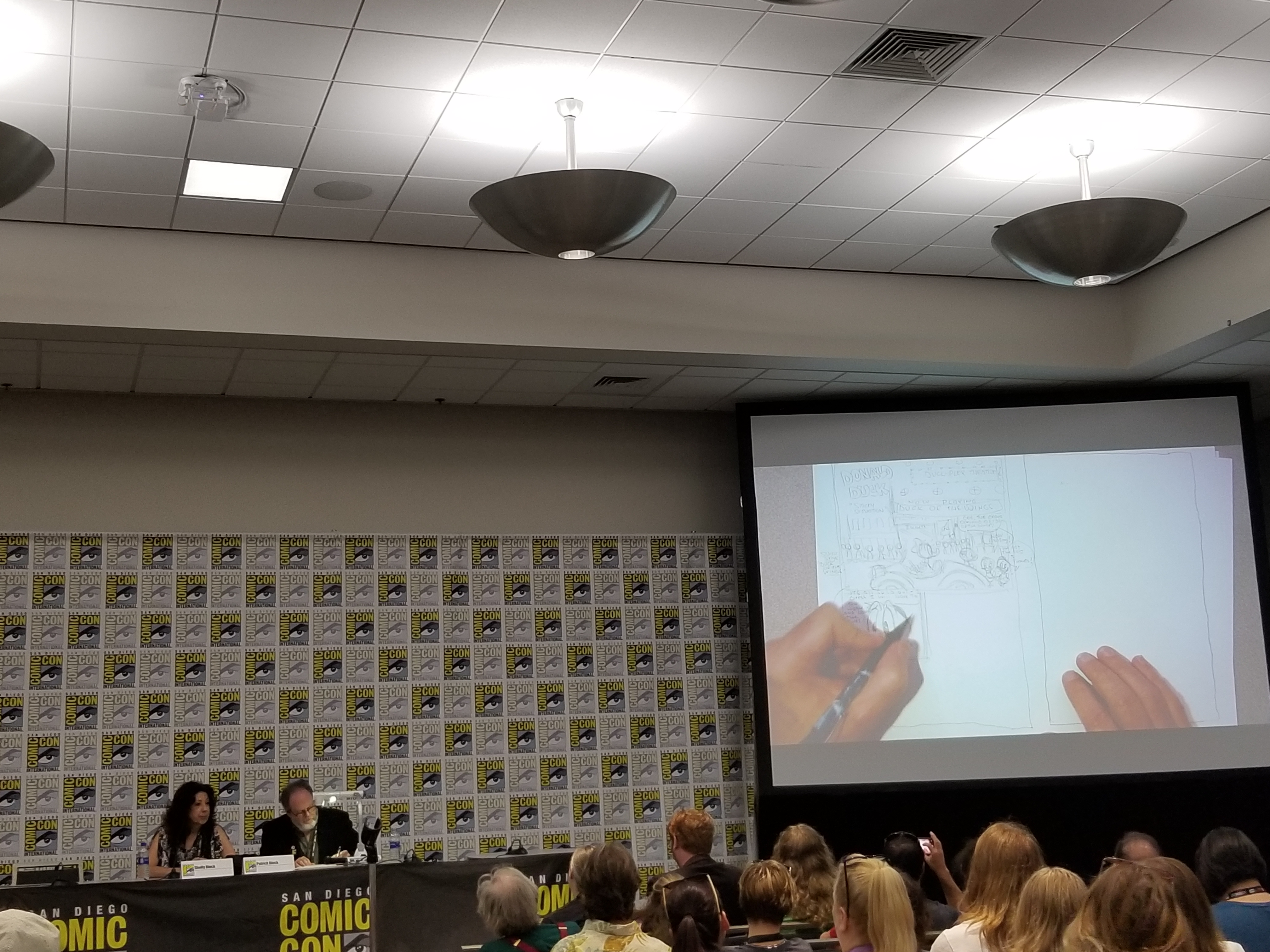On the last day of San Diego Comic-Con, Shelly Block and Patrick Block returned to give a crash course on comic creation in the aptly-titled “Creating a Comic” panel. With a healthy amount of audience interaction, the Blocks created a Donald Duck comic showcasing the Disney character’s attempts to bring his nephews to the movie.
Instead of spoiling this new comic, because, as the Blocks pointed out, sometimes these audience-pitched stories actually lead to official Disney comics, I’m going to leave you with these classic cartoonists’ best pearls of storytelling wisdom.
1. Know your story and how format can limit it.
Taking place in Comic-Con’s “How To” room, the Blocks shared a lot of tidbits about how to make a comic book story. In-front of an audience full of aspiring storytellers, Patrick instructed them to think about what kind of stories they want to tell instead of focusing on the fact that they want to tell stories.
“A lot of people say they want to create a comic story, a lot of people have that inspiration, but not everyone knows what they want that story to be about.”
Whether they are working on a six page story with the entire Duck family or just a one-page Uncle Scrooge story, the Blocks have learned how to frame their stories in various structures. The Blocks can choose to start things at any point, but because they know how they want their stories to end from a narrative perspective, they can choose to begin right at the dawn of the action instead of drawing things out too much.
“Makes you force yourself to narrow things down to a pattern of how you [tell a story],” Patrick said.
2. Create relatable characters.
Part of why Donald Duck, the character the Blocks are most often associated with, is such a classic is due to how relatable he is. As Patrick puts it, “everyone’s flawed,” and even though Donald Duck may find himself in odd situations or get angry sometimes, he should always be understandable.
During the panel, as people shouted out dialogue suggestions, Shelly reminded the audience to keep things in-line with the established world and tone of the character. A so-called “gag machine” according to Patrick, Shelly insists its important when working on characters like Donald Duck to maintain a voice that is consistent with what the audience expects.
“We don’t want to get too hoity-toity with our dialogue,” she said.
3. Keep those relatable characters in grounded stories.
Like the best improv performers, the Blocks opened the panel by asking for a setting or different situation for their new comic. After a medieval setting with dragons was floated, Patrick revealed that he has trouble writing the ducks in more far-fetched situations because he can’t imagine himself in that kind of setting.
“The stories I like the most are simple because I can relate to them, whereas I can’t really relate to Donald Duck in a medieval setting because he doesn’t really fit there.”
Putting classic characters in crazy situations may open the door to new potential stories, but Shelly thinks doing common things in a new way can be just as entertaining if done right when creating a comic.
“Sometimes the hardest thing is to keep it simple,” she said.
4. Know when to think about the extras.
While the audience was still establishing the comic’s plot, someone mentioned the idea of Donald getting stuck to a seat with gum. Calling the idea more of a gag than a plot point, Patrick said he likes establishing a completed narrative before coming up with all the ancillary details.
“Once we have our premise and our ending, then we add on the gags,” Patrick said.
Gags and easter eggs are important though; they are just the frosting on-top of the comic’s core story. With a punny movie title like Duck of the Wings included and audience conversation momentarily revolving around a Donald Duckifed Gandalf, Shelly insisted that those things help create a more engrossing world.
When it comes to creating a comic, she said, “That’s how you keep it interesting without constant dialogue, those little things.”
5. Don’t forget to pace your story (and jokes).
Whether you have an idea for an on-going title or a short story of some sorts, it’s important to pace the story out efficiently. Pacing is an essential part of any story and proper pacing is a key ingredient to holding a reader’s attention for long periods of time.
It’s important to capture people’s attention quickly, that’s why James Bond movies always start with an explosive sequence, but creators have to make sure the story always feels like it’s building towards something.
The same progressive rules even apply in small-scale Donald Duck comics. Whether your main character is beating up bad guys on a secret mission or just trying to get a treat at the movie theater, as Donald did in the fan-created story, it’s important to maintain a sense of momentum when creating a comic.
“When you have a bunch of gags, you put them in ascending order of funniest, with the funniest one coming last,” Patrick said. “That way it feels like it’s building as you go.”
6. Nighttime inspiration is real.
When asked if they’re hit with dialogue ideas in the middle of the night, Shelly said it happens “all the time.” As people reflect on the day’s events before finally drifting to sleep, they make connections and look at things in a different light, especially if they’ve been hard at work trying to formulate a story.
There’s no shame in keeping a notebook or vocal recorder at your bedside because ideas, especially ones created from a pillow in a dark room, often disappear as quickly as they arrive.
“Grab it when it’s available,” Patrick said with a smile.











